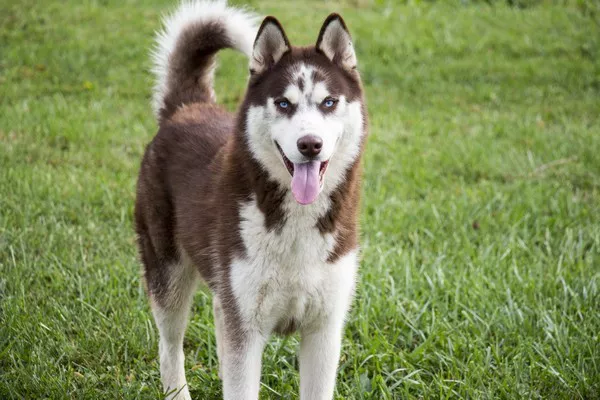Introduction
Siberian Huskies are one of the most popular dog breeds in the world, and their striking blue eyes are one of their most distinctive features. However, did you know that there are actually several different eye colors that Huskies can have? And that some of these eye colors are rarer than others?
In this article, we will take a look at the different eye colors that Huskies can have, and we will discuss which one is the rarest. We will also discuss the genetics of Husky eye color, and we will explore some of the factors that can affect a Husky’s eye color.
Types of Husky Eye Color
The most common eye colors for Huskies are blue and brown. However, it is also possible for Huskies to have green eyes, parti-colored eyes, or even heterochromia (two different colored eyes).
Blue Eyes
Blue eyes are the most common eye color for Huskies. In fact, about 75% of all Huskies have blue eyes. Blue eyes are caused by a lack of melanin, the pigment that gives eyes their color. When there is less melanin in the iris, the eyes appear blue.
Brown Eyes
Brown eyes are the second most common eye color for Huskies. About 25% of all Huskies have brown eyes. Brown eyes are caused by the presence of melanin in the iris. The more melanin in the iris, the darker the brown eyes will be.
Green Eyes
Green eyes are the rarest eye color for Huskies. Only about 1% of all Huskies have green eyes. Green eyes are caused by a combination of melanin and the way that light refracts in the iris.
Parti-Colored Eyes
Parti-colored eyes are eyes that have two different colors. This can be any combination of blue, brown, and green. Parti-colored eyes are caused by a condition called heterochromia iridis. Heterochromia is a genetic condition that can affect any breed of dog.
Heterochromia
Heterochromia is a condition in which an animal has two different colored eyes. This can be caused by a number of factors, including genetics, injury, or disease.
In Huskies, heterochromia is most commonly caused by genetics. The gene for blue eyes is recessive, so two Huskies with blue eyes must both carry the gene in order for their puppies to have blue eyes. If one of the parents has brown eyes, the puppies will have a 50% chance of having blue eyes and a 50% chance of having brown eyes.
Genetics of Husky Eye Color
The genetics of Husky eye color are complex. There are a number of genes that can affect a Husky’s eye color, and the exact combination of genes that a Husky has will determine their eye color.
However, the two most important genes for Husky eye color are the EYCL1 gene and the ASIP gene. The EYCL1 gene controls the amount of melanin that is produced in the iris, and the ASIP gene controls the distribution of melanin in the iris.
Factors Affecting Husky Eye Color
In addition to genetics, there are a number of other factors that can affect a Husky’s eye color. These factors include:
Age: Husky puppies are born with blue eyes, and their eye color may change as they get older.
Environment: The environment can also affect a Husky’s eye color. For example, exposure to sunlight can cause the eyes to darken.
Health: Some health conditions can also affect a Husky’s eye color. For example, dogs with albinism will have blue eyes.
Conclusion
The rarest eye color for Huskies is green. Only about 1% of all Huskies have green eyes. Green eyes are caused by a combination of melanin and the way that light refracts in the iris.
Other rare eye colors for Huskies include parti-colored eyes and heterochromia. Parti-colored eyes are eyes that have two different colors, and heterochromia is a condition in which an animal has two different colored eyes.
The genetics of Husky eye color are complex, and there are a number of factors that can affect a Husky’s eye color. However, the two most important genes for Husky eye color are the EYCL1 gene and the ASIP gene.
If you are looking for a Husky with a rare eye color, you may have to do some searching. However, if you are patient, you may be able to find a Husky with the perfect eye color for you.


